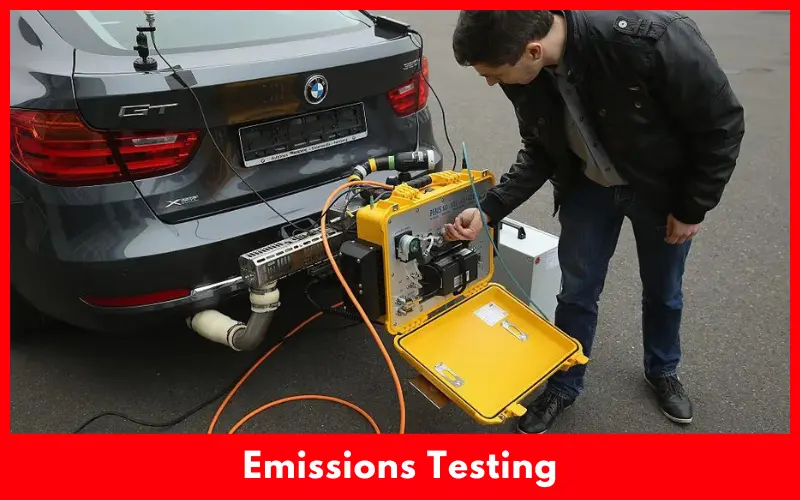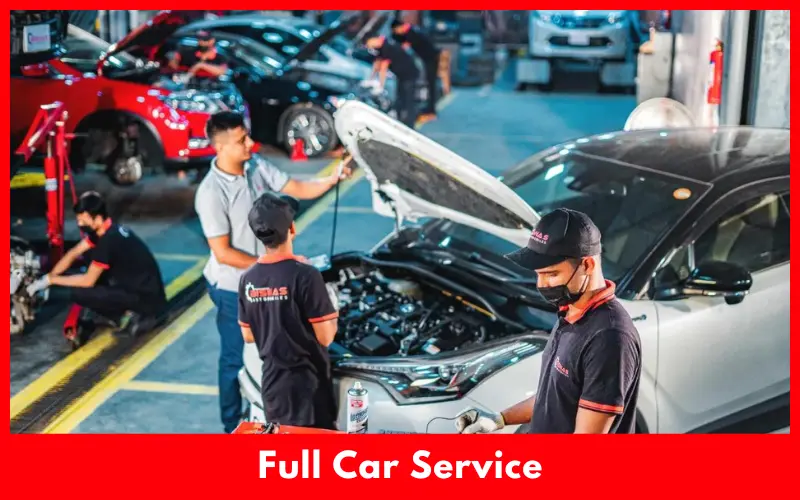A full car service does give your car a complete tuning. It’ll go deep into the well-being of your car to make sure it runs the way it was meant to, and that it keeps you safe at the same time.
You should have a full service at least once or twice a year, rather than just a quick and dirty oil change meant for weekend warriors, which doesn’t fully service the heart of the engine and can lead to uncharted territory down the line.
Article Summary
What Does a Full Car Service Include?
It’s best to stick to a schedule that maintains your car’s youth and makes you feel like you’re getting one, too. Keeping your car compliant with regularly scheduled services means you’ll be able to catch things
Before they become big problems, and maintaining a good record or a clean slate will save you money in the long run, because you won’t have to spend so much on the unexpected later.
Basic Components of a Full Car Service
Engine Checks and Oil Change. This includes anything that can impact engine function including the tightness of timing lines, pistons, oil checks, anything that can impact the Engine’s function. An oil check and oil change is mandatory to ensure proper engine function, all strained oil is extracted from the engine.

The reason for which we always, and recommend changing the oil filter is simply to prevent contaminants from circulating through the engine.
1. Brake System Inspection
Brake pads and discs are checked to make sure there is adequate clearance and not worn out. Brake fluids are tested and added, as fluid is needed in the hydraulic system of the brakes.
All repairs are performed if there are signs of brake wear or damage. It is important to keep the brakes in good working order.
2. Tire Inspection and Rotation
Inspecting the tires includes examining tread depth to ensure adequate grip, inspecting tire pressure and sensor to maximize both fuel efficiency and handling, and inspecting the overall condition of the tires for damage.
A recommendation for tire rotation may also be included to maintain even wear among all tires, thereby lengthening the lifespan of the tires and ensuring balanced vehicle handling.
3. Additional Services Based on State Requirements
Depending on the rules, requirements and legislations in the state where you are offering a full car check, you should check specific parts of the car form which must be checked according to local law to stay within the requirements.
This will result in additional checks or tests which must be done for customers in full car checks that do not apply in other states.
4. Emissions Testing
The emissions test is a procedure that permits the status of vehicles corresponding to the state compliance in air pollution rules.

For example, states like California have severe emissions regulations that require frequent and extensive testing while states such as Montana may have far more lenient standards or no emissions testing required.
The frequency and nature of emissions testing could significantly influence the degree of a complete car service.
5. State-Specific Inspection Requirements
Many states additionally mandate an inspection at least once a year during a to emissions testing, like New York, which requires an annual safety inspection that checks lights, seatbelts and exhaust, or Texas that requires a complete inspection that might include vehicle identification number (VIN) checks or insurance verification along with lights and exhaust.
How Often Should You Service Your Car?
You can’t just drive your car for ages without servicing it, but home in on the right figure, and not only will you keep the vehicle in good health, you’ll also avoid eroding its condition. Several guidebooks suggest servicing a car every x thousand miles, say, or once a year, but the reality is that the frequency depends on who made the car, and what state you’re in.
Manufacturer’s Recommendations
Car manufacturers give special instructions for how often a full car service should be carried out, which is usually a function of either mileage or time intervals (e.g. every 12,000 miles or once per year, whichever comes first).
This is because the special needs of that particular model of a car will enable it to provide its ideal operational performance in terms of safety and efficiency.
How State Laws Might Affect Car Service Intervals
In some states, it might be a municipal requirement that translates to more frequent vehicle inspections or service intervals, for instance as it regards emissions or safety checks. In California, for instance, some mandates might require more frequent emissions testing, which can happen along the same time period as other services or even prompt them.
Other states that see harsh winters, such as Maine, might recommend more frequent servicing to keep vehicles in operating order if they are often exposed to Gusty winds, subfreezing temperatures or falling snow. Being cognizant of the requirements of your manufacturer as well as your state ensures you can maintain a vehicle that’s both legal as well as reliable in all seasons.

